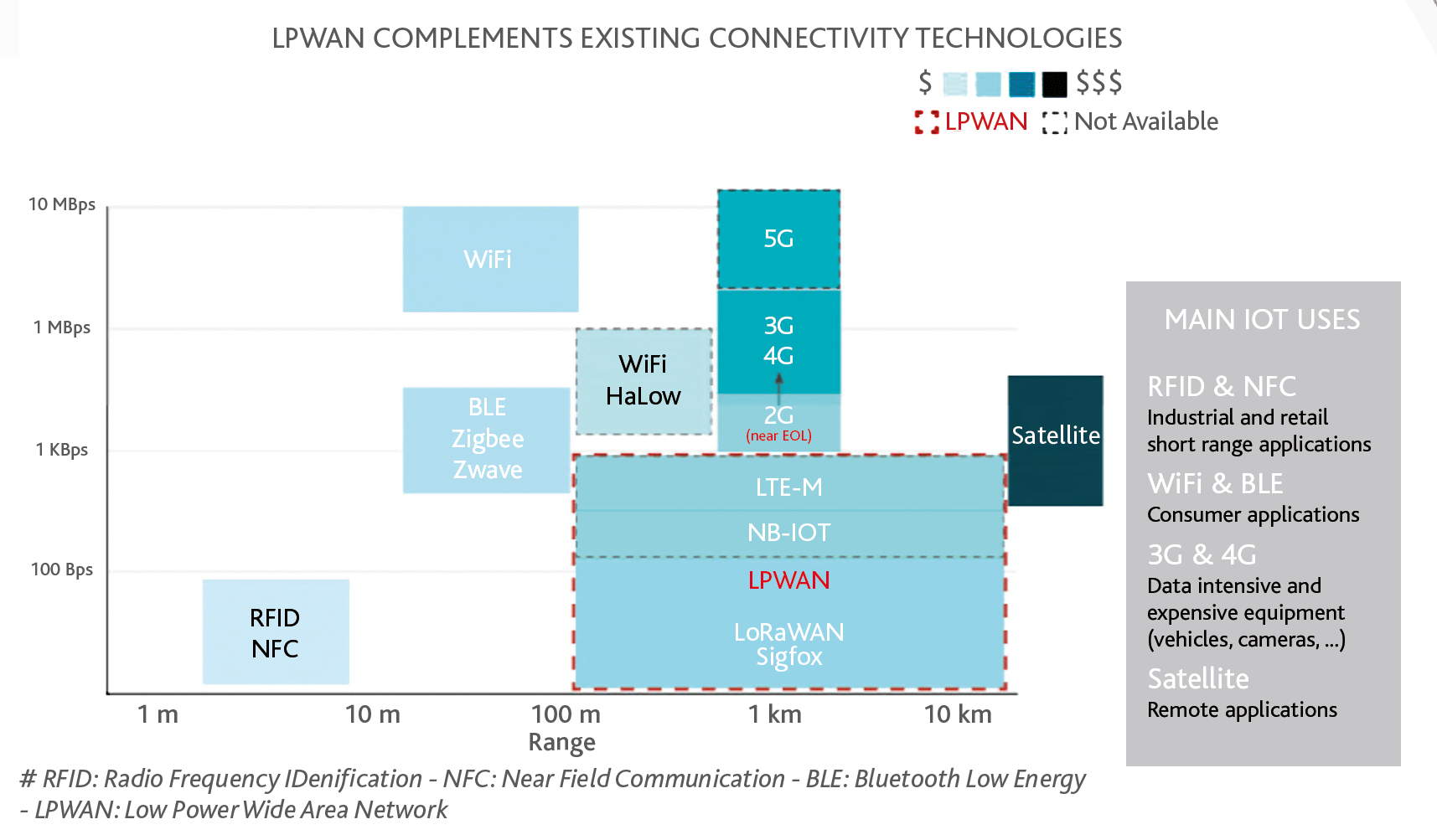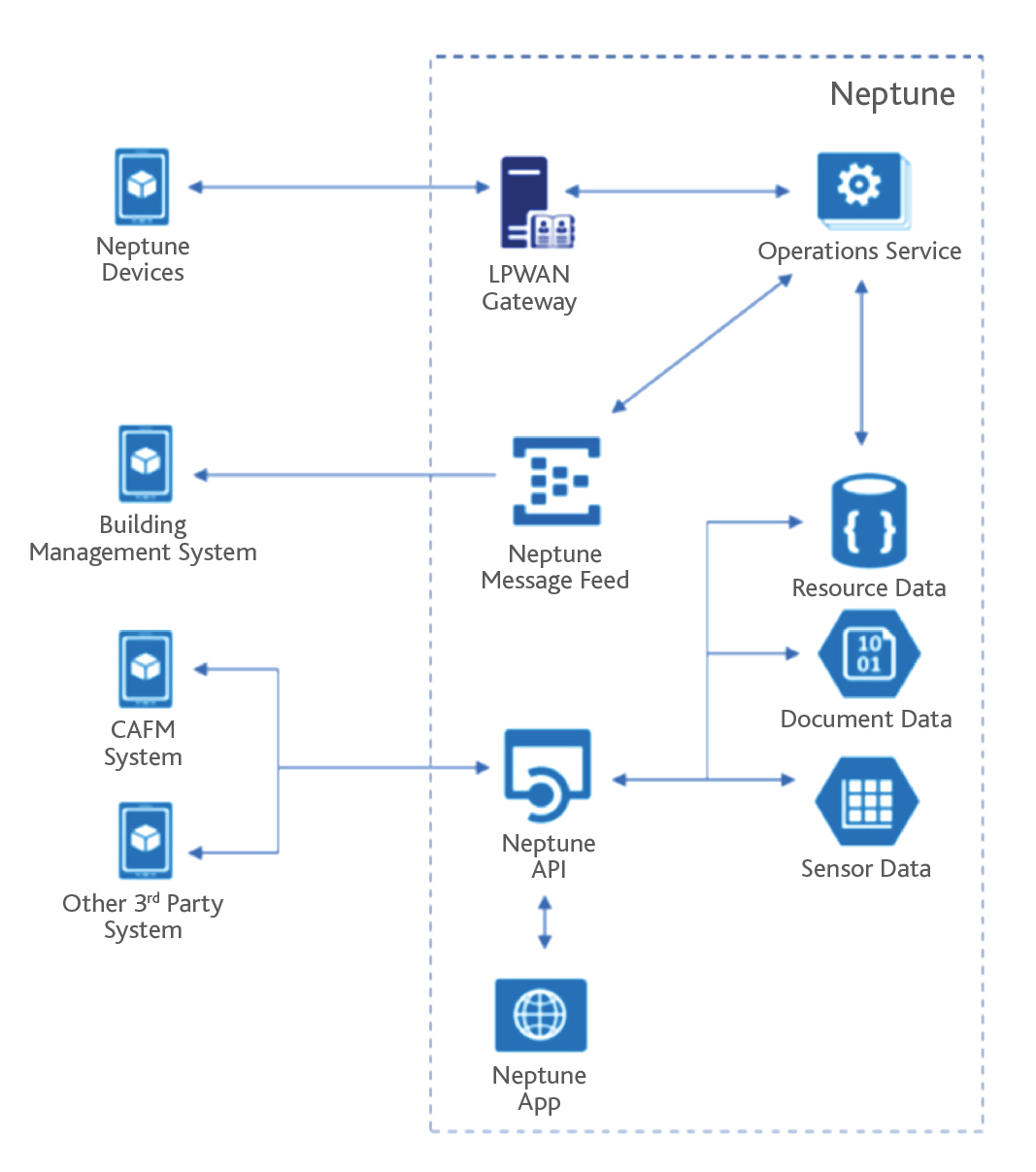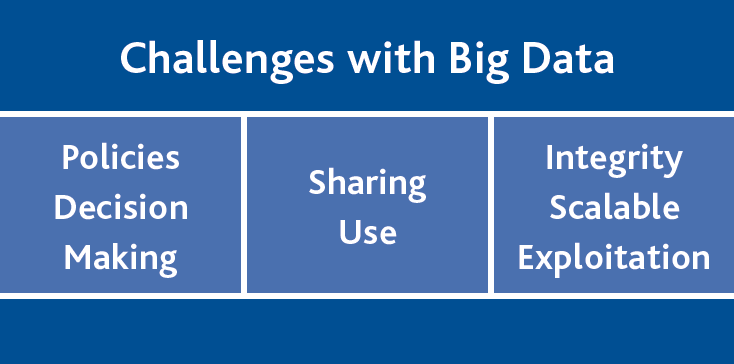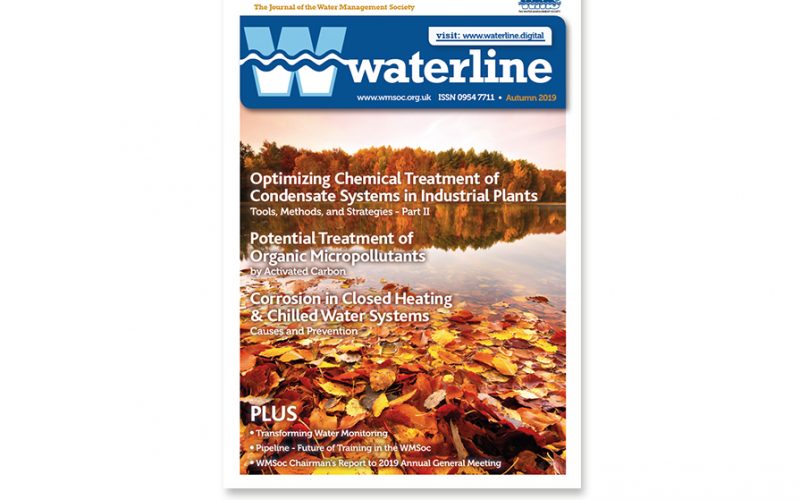As featured in waterline Autumn 2019

Transforming Water Monitoring
Warren Bradshaw,
The Highland Council
The Highland Council Water Safety Team after a reshuffle in 2016 wrote a strategy document on how to improve compliancy, service delivery and increase the value of its spending with new and emerging technologies. Engaging with the Corporate Improvement Team, a budget was allocated to a number of emerging technologies to help trial and steer the new strategy.
Part of the strategy was to trial remote temperature monitoring. One of the Councils Statutory Duties is to monitor water temperatures in buildings monthly where temperature is the main engineering control to avoid the proliferation of Legionella in Domestic Water Systems. A number of companies were engaged to deliver a trial using “off the shelf” solutions. An Internet of Things Solution was selected using low power networks; and a two year trial began using Sigfox as the connectivity provider. During this Trial the Water Safety Team was approached to enter into a second trail with Capita and Censis using LoRa as the primary connectivity option.
From these trials a cost benefit analysis was carried out on the Monthly Monitoring tasks, compared to contracted services and internal resources being applied to the task of reviewing reports. Efficiencies were identified through the trials.
Smart Cities Team engaged with the Water Safety Team to assist in applying for European Funding for IOT Connectivity. The funding was applied for after pulling together a project plan, based on connectivity options. A further Prior Information Notice was placed on OJEU, companies were asked to present their solutions to help inform the strategy for possible tender.
Connectivity providers, suppliers of hardware and software plus other potential stakeholders were engaged with, to help inform the requirement for the tender. A tender specification was produced.
STRATEGY
The first step in the IOT strategy is to identify business case uses for the emerging/ existing technologies. It was determined that a water monitoring system in buildings which are in remote geographical locations, would be a viable solution for the technology.
This may show a saving on contracted services and the carbon footprint of the monitoring regime required by legislation. If the analytics are advanced, reports can be reviewed more easily and alerts in the system can help with notifications when systems are out of specification.
Most IOT applications hardware; are simple devices which have simple technology attached to them, such as simple processing boards, this in turn means a small amount of computing power. This allows for the devices to be run off batteries. The devices are not normally required to compute but more gather data; to monitor a simple data logging event.
If the complexity of the process or data being gathered exceeds the limits of what the user requires then robust computer devices will be required for the tasks which means a different approach is required. WIFI and wired systems are also considered to be IOT functioning devices for example a Building Management System.

IOT devices mostly operate in LPWAN environments, these can be unreliable. Connectivity is a big driver in relation to the end solution of monitoring. The size of the data pack that is being sent, message rates and other functions will have to be considered for the correct connectivity options to be utilised.
If devices require firm wear updates, this can add to the connectivity problems. Local firm wear updates during routine maintenance can be achieved through Bluetooth or BLE but this can impact on device costs and battery life.

When you set out to build an IOT application, you have to consider various devices, hardware kits, Software Development Kits, and communication protocols on top of your typical software development environment. Application Programming Interface with other existing or future systems.
The Water Monitoring IOT solution was to use low power network connectivity options, either LoRa or Sigfox network options. The devices were to be wireless and hosted through a connectivity server onto a cloud based system. This would not use any existing council systems ensuring integrity of the Councils operating systems, allowing for wireless devices to be utilized which are not overly complex. This will lower costs and ensure continuity of connectivity by utilizing an agnostic system.
When strategizing about using a wireless system we had to consider user interaction with devices, how the devices could be fitted and other issues such as asbestos in buildings which would affect a wired against a wireless system. Device requirements should be considered carefully, where they might be located, how they can be fitted and environments they will be asked to work in, such as extreme heat or cold. If devices are to be fitted by staff and maintained careful consideration of their placement and access has to be reviewed. This can add costs to projects and also affect connectivity if fitted in basements etc.
IOT for most organisations will be a new concept and requires different ways of thinking and new business models to be developed. It is important from the outset to define a suitable and sustainable IOT policy model, ensure your organisations capabilities in relation to implementation, and identify quick wins. Surveys which may be required to determine device placement will add to project costs greatly, the variety of surveys and other stakeholder involvement can mean additional project complexities that require consideration.
Water Monitoring devices require placement in nondomestic premises such as schools and other public buildings, near water systems and in plant rooms. Sensors are required to monitor off multiple pipes in the same area.
Do not under estimate the levels of resources and stakeholders that may be involved in supplying connectivity and the end solution. The level of complexity involved in what may seem a simple request to adjust or introduce a technology and implement a project, may be far more complex than first thought. Put together a project risk register and ensure it is thorough enough to inform the project.
Deploy a sustainable software architecture which new and old/ existing solutions can be blended together. This also involves incorporating new and old processes, such as batch data gathering exercises. In most cases, the IOT Technology you select cannot simply replace existing systems and processes. A solution has to be integrated— without identifying weakness’s in the instigation of a new technology with existing systems, incompatibilities can create implementation issues and confusion.
BIG DATA
One of the biggest challenges facing any organisation is recognising the data gathering exercise which is required to utilise different technologies. To fit a water monitoring system a large amount of data is required to inform the process.
Understanding critical infrastructure that requires monitoring and other at risk areas within a buildings water system is critical to informing the process. If the system is placed in the wrong areas then it will not inform the risks affecting the infrastructure correctly Good risk assessment is a critical data gathering exercise. Ideally as built drawings are required to inform this process.
When using IOT for monitoring purposes on an industrial scale the amount of batch data gathered will be huge, although probably manageable for most organisations; due to its lack of velocity. Once monitoring starts you could go from one temperature a month for an asset through to 97 messages a day. This information volume can be over whelming and organisations may struggle to manage this amount of data.
Data management requires good policies and procedures. How the data is to be shared. The organisation needs to have in place good auditing processes and ensures the IOT system is working within parameters. Batch data has to be confirmed to inform this process.

Organisations that can learn to integrate big data into their business can decrease expense by 49%. It can enhance avenues for innovation by 44%. Approximately 32% of data gathered by organisations can be monetised. With big data gathering business worth 118 billion by 2022 with an annual growth rate of 26%, organisations enhancing their understanding in this field can increase their potential standing in the market place.
DATA MINING
When undertaking this process on a global scale information needs to be classified and resources to manage this information need to be detailed and allocated. Batch, semi real time and real time data needs to be integrated into an analysis model. Structuring the data for expert analysis.
Data veracity due to overwhelming volumes can create bias in interpretation. The organisation can become quick to conclude, unless data goes through a process and is enriched for analysis. When entering into data analysis a number of steps need to be taken to ensure a successful conclusion.
Goals for the data use need to be clearly identified. This can be achieved through policy or business case. If overwhelming processes are in place this can over cast the data analysis. Don’t be bias when analysing data, let the data lead you to the right conclusion. Utilise all of the data available, do not rely on just one data set but consider all the data from all sources. Make sure conclusions are clear and succinct.
When reviewing data do not rush to analyse the data, remove any data variables when enriching data to ensure the data is devoid of variables.
BENEFITS OF IOT
IOT will create efficiencies by giving real time data that allows further insights into system performance. Claims that this will reduce manual intervention is only applicable if a system is functioning correctly. For the most part it will increase high value manual intervention until a system is brought under control.
It allows for a proactive approach to a water system and its management. It will increase the integrity of the data being gathered, allowing for an improved decision making process. Resources allocation and system management means increased productivity. These are cost benefits that are easily quantifiable.
There are also soft cost advantages available which are harder to quantify but should not be dismissed. Conservation in planned preventative maintenance cycles become further informed and more likely to benefit a system, improving the reliability.
IOT can help skilled resources be pin pointed to increase an organisations efficiency. Right people, right place at the right time. This saves time and money. It can coach an organisation into being focussed in the right areas.
Utilising IOT requires batch data to inform placement. This forces an organisation to firm up asset management protocols and put in place solutions for inventory management.
There are many existing and emerging IOT Technologies and business use cases. Although not all of these are commercially viable for every situation. Before engaging in a program it is worthwhile considering what you want to achieve, what options are available to you in achieving the goals that have been identified.
When looking at technology to resolve a problem, ensure it will solve the problem you are looking at and not create other dependencies, for example; if buying a device for monitoring, who is going to fit and maintain the device, does the device create other maintenance/ monitoring requirements?
The process that is going to be automated should allow for other dependencies such as resource allocation to the task. For example when trialing the water monitoring product we created as many reporting issues, if not more by automating the process, due to data velocity compared to contracted monthly reports. This created an alert fatigue environment.
Consider carefully the data that you wish to gather and select the right connectivity for the hardware to collect, disseminate, retrieve and review. This may add on expensive less mobile solutions if large amounts of data is gathered.
When looking at connectivity options ensure you are not supporting another commercial environment. A lot of connectivity channel partners will support their own commercial interests in giving connectivity. When considering connectivity carry out physical signal checks to ensure the areas of deployment are covered, this includes all areas within buildings as some signals will be lost in certain areas of a large building.
Security of the system and the data gathered, plus details of users is a big topic in relation to data protection. Ensure devices are encrypted where possible. Use multifactor authentication applications for user interaction. If using cloud based systems consider whether single use applications are required in high security settings. Ensure the cloud provider has business continuity for server to server backup, with secure and resilient infrastructure. Accredited data center facilities with support networks should be utilised.
It is more than likely the devices will require their own servers for traffic before the data is received in the cloud, with the capacity to put up a single use network using IOT consider the traffic and any future proofing required.
When asking for added features or functionality, developers and software engineer’s fees are expensive, up to £75/ hour+. Before commissioning services consider whether you will want to keep the IP of this development, rather than the provider selling it on. This can ensure reduced costs later on in the project and a possible revenue stream.
What other use cases can the technology be used for to increase a possible spend. When monitoring water temperatures it was discovered the technology could also monitor heating systems and be used for environmental monitoring.
Ensure any system is fully integrated with mobile and desktop applications. The software needs to be intuitive for stakeholder engagement and work on platforms which are regularly utilized by the end user.
IOT is a complex technology opportunity which can in certain circumstances have multiple strategic benefits to an organisation. Planning for this technology and understanding the market is key to project success.
One of the biggest lessons learned is that rarely do things work straight out of the box. Everything needs some form of customisation. Major projects require policies, processes and resources to ensure their success.
FURTHER READING
The Scotsman: https://www.scotsman.com/business/hi-tech-water-monitoring-to-top-up-growth-attayside-firm-1-4978829
The Dundee Courier: https://www.thecourier.co.uk/fp/business/business-news/951068/flood-of-salesfrom-water-sensor-system/
Scottish Cities Alliance: https://www.scottishcities.org.uk/media/blog/iot-scotland-welcomes-firstcustomer-as-the-highland-council-introducestransformational-water-monitoring-technology
CENSIS: https://censis.org.uk/2019/08/13/m2m-cloud-rides-neptunes-wave-to-growth/












